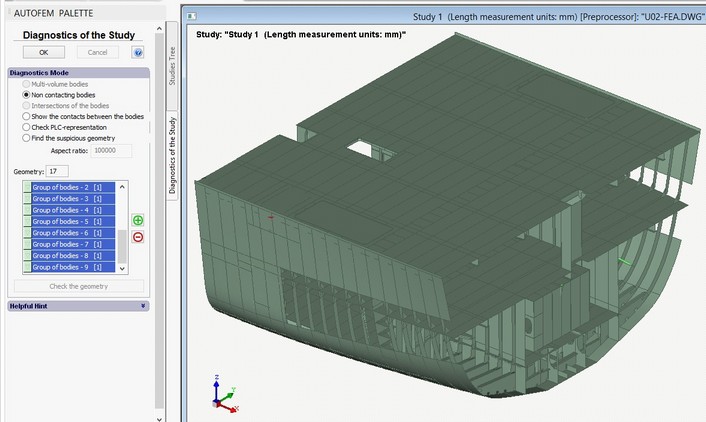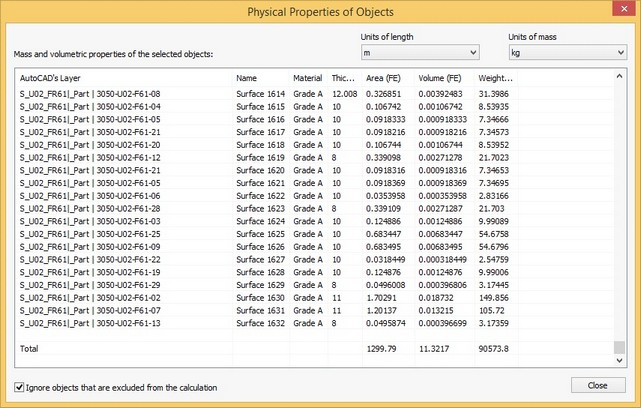 |
AutoFEM Analysis Study diagnostics. Exclusion of gangling bodies | ||||||
The dialogue of study diagnostics is, on the whole, similar to the dialogue of the command Diagnostics of the set of objects, but it differs significantly from the latter on one important point. This command allows one to exclude gangling bodies from the computation, not changing the initial content of the study. The user must analyse the list of gangling bodies. If one can neglect these bodies for the purposes of the specific study, it is then possible to exclude them from the computation by selecting them on the list and pressing the relevant button. At that point, the objects per se remain within the composition of the study, but it is impossible to apply boundary conditions to them and see them in the Postprocessor, etc.

Exclusion of gangling parts from the computation
If the floating bodies cannot be disregarded, the user must come back to the editing of the study and eliminate the parts, not having common points.
In our case, we see that a few small fasteners appear to be non-adjacent to other parts; we shall exclude them from the computation.
Additional test of correctness of the mesh model. The command Physical properties allows one to learn the estimated mass of the structure compared with the mesh model and can serve as an additional method of testing the accuracy of the finite-element model.

Accessing the command Physical Properties

Dialogue of reflecting masses of parts on the basis of the mesh model data
Next step: Setup of acceleration